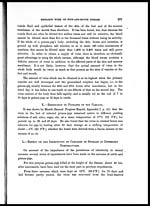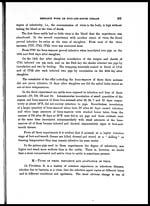Medicine - Veterinary > Veterinary colleges and laboratories > Indian journal of veterinary science and animal husbandry > Volume 2, 1932 > Original articles > Research work on foot-and-mouth disease
(241) Page 204
Download files
Individual page:
Thumbnail gallery: Grid view | List view

204 THE INDIAN JOURNAL OF VETERINARY SCIENCE AND ANIMAL HUSBANDRY [II, II
(Appendix III, p. 284). That the virus usually remains active for very much
longer periods when carcases are kept at " chilling " or freezing temperatures has
been shown by numerous experiments.
It is known that repeated freezing and thawing has the effect of killing some
bacteria, and it has been suggested that the same result would follow in the case
of foot-and-mouth virus. Mr. Galloway has made many observations on the
virus in tap water, in blood, in the skin of guinea-pigs' pads, in bone-marrow, and
in the whole carcase, and has not found that the repeated freezing and thawing has
any effect in lessening the activity of the virus.
Carcases of guinea-pigs with primary or secondary lesions, which were frozen
for 26 days and then kept at 18°C. (64.4°F.) for 5 days, contained active virus
in the bone-marrow ; virus was also recovered from another carcase after chilling
at —4°C. (24. 8°F.) for 25 days, and from a third which had been 25 days at 4°C.
(39.2°F.) and then for 3 days at 18°C. (64. 4°F.).
In another experiment the virus in bone-marrow from an infected carcase,
which had been frozen and thawed 6 times in the course of 30 days, was still active.
In many of these experiments, however, there was reason to suppose that the
virus was deteriorating somewhat during the period of storage.
Dr. Andrews and his colleagues, working with guinea-pigs, made observations
on the survival of virus in the different organs and tissues which were removed
after death and stored separately at a chilling temperature of—2°C. (28.4°F.).
He found virus still active in the tongue, lungs, heart, liver, kidney, fat, bone-marrow
and tendons, at periods ranging from 62 to 145 days after the death of the animal.
In order to test more exactly the conditions under which carcases are kept
when stored for trade purposes, cattle were allowed to acquire the infection by
contact with other animals and were slaughtered by a butcher at the stage of the
disease which was believed to be the most infective.
The carcase was dressed, quartered and cooled at about 30°F (—1°C.). After
3½ days it was wrapped in stockinette and hessian and stored at 29°F. (—1. 6°C).
The offal, liver, tongue, cheeks, heart, skirt and gall-bladder, and also pieces of
stockinette and hessian soaked in blood were kept separate and stored at 18°F.
(—7. 8°C.).
Three such experiments were made with 10 cattle in all, and are recorded in
Appendix I, p. 40. It was intended that the carcases should be highly infective
at the time of slaughter. The degree of infectivity varies, however, very much
in different animals, and also with different strains of virus. It is not easy to tell
whether an animal is at the most infectious stage of the illness, and whether the
Set display mode to: Large image | Zoom image | Transcription
Images and transcriptions on this page, including medium image downloads, may be used under the Creative Commons Attribution 4.0 International Licence unless otherwise stated. ![]()
| Permanent URL | https://digital.nls.uk/75227938 |
|---|
| Description | Covers articles from 1932. |
|---|




